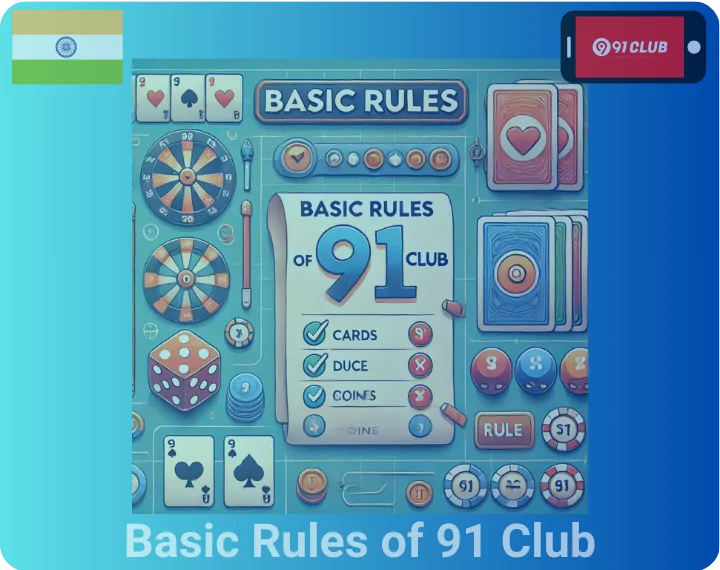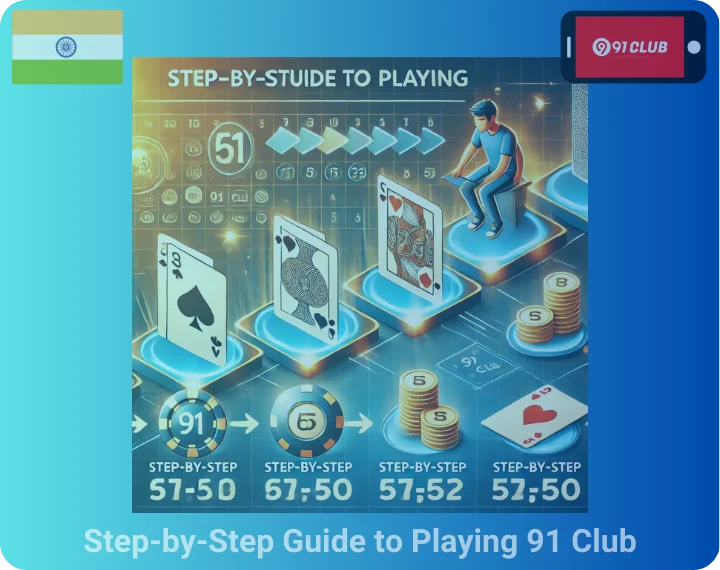Introduction to 91 Club
What is 91 Club?
91 Club is a popular card game played primarily in India, where the objective is to keep your score as low as possible, ideally under 91. It is easy to learn but requires strategic thinking and quick decision-making, making it a fun and competitive experience.
Why is it Popular?
91 Club has gained immense popularity due to its simplicity, fast-paced gameplay, and the social aspect of competing with friends or players around the world. Its easy-to-understand mechanics make it accessible for both beginners and experienced gamers.
Who Can Play 91 Club?
91 Club is suitable for players of all ages, but it is most enjoyed by those looking for a mix of strategy and entertainment. It appeals to anyone who enjoys card games and social interaction, from casual players to competitive enthusiasts.
Basic Rules of 91 Club
Objective of the Game
The main objective in 91 Club is to avoid accumulating points. Each player is dealt cards, and the goal is to manage your hand in such a way that your total score stays below 91. The first player to reach or exceed 91 points loses the round.
Key Rules to Remember
Players take turns drawing and discarding cards. – Points are calculated based on the rank of cards in hand. – Special rules apply for certain cards, which can either help you or hinder your progress. – You must always keep track of your score to avoid crossing the 91-point threshold.
Winning Conditions
To win, you must be the last player remaining with fewer than 91 points. Players who accumulate 91 points are eliminated from the round, and the winner is the last person standing.
Step-by-Step Guide to Playing 91 Club
Step 1: Setting Up the Game
Begin by shuffling the deck and dealing a specific number of cards to each player. The number of cards depends on the game’s variation, but each player should have an equal number. Place the remaining cards face down as the draw pile.
Step 2: Understanding the Game Board and Components
The game primarily involves cards. Players hold their cards in hand, and there’s a draw pile from which cards can be picked. Special cards may include wild cards or penalty cards that can impact the gameplay.
Step 3: Taking Turns and Making Moves
Players take turns in clockwise order. During each turn, a player draws a card from the pile, decides whether to discard a card, and then places it face-up in the discard pile. The strategy lies in managing your hand carefully to prevent accumulating points.
Step 4: Scoring Points
The points are calculated based on the cards held in hand. Number cards hold their face value, while face cards (King, Queen, Jack) have a higher point value. Keep track of your total score to ensure it doesn’t exceed 91.
Step 5: Declaring the Winner
The winner is the last person who has managed to avoid reaching 91 points. If all other players have accumulated 91 or more points, the remaining player is declared the winner.
Tips for Beginners
Common Mistakes to Avoid
- **Ignoring the score:** Always keep track of your score to avoid accidentally exceeding 91.
- **Holding onto high-value cards:** High-value cards increase your chances of losing, so discard them if possible.
- **Failing to predict opponent moves:** Pay attention to your opponents’ strategies to avoid surprises.
Basic Strategies to Get Started
- **Manage your hand:** Discard cards that will add a lot of points to your total, especially face cards and tens.
- **Observe your opponents:** Look for patterns in their gameplay and use that knowledge to adjust your strategy.
- **Stay flexible:** The situation can change rapidly, so be prepared to alter your tactics as the game progresses.
How to Learn the Game Quickly
To learn 91 Club quickly, start by playing with friends or family. Play a few rounds to get comfortable with the rules, and don’t be afraid to ask for tips. You can also read up on strategies or watch tutorials online to understand the mechanics better.
Advanced Gameplay Techniques
Strategic Moves to Gain an Edge
- **Bluffing:** Use bluffing to trick your opponents into thinking you have a lower hand than you do. This can make them discard valuable cards.
- **Card Counting:** Keep track of cards that have been discarded and use this information to anticipate what cards your opponents might draw.
- **Pressure your opponents:** Try to force opponents into risky moves, like drawing a card that will put them close to 91 points.
Analyzing Opponents’ Strategies
Observe how your opponents play and identify their tendencies.
Do they hold onto high cards or discard them quickly? Do they play aggressively or cautiously? By understanding their patterns, you can adjust your own strategy to gain an advantage.
Adapting to Different Game Scenarios
– **When you’re behind:** If you’re trailing, focus on defensive strategies, like discarding high-value cards and waiting for opportunities to force your opponents into risky situations.
– **When you’re ahead:** If you’re leading, play cautiously. Don’t take unnecessary risks and try to maintain a low profile to avoid drawing attention.
91 Club Game Variations
Classic Mode
In Classic Mode, players aim to keep their points under 91, and the game follows the standard rules with no additional features. It’s ideal for those who enjoy traditional gameplay.
Timed Challenges
Timed Challenges introduce a countdown timer, requiring players to make decisions quickly. This variation adds an extra layer of excitement and pressure to the game, making it more fast-paced.
Multiplayer Options
91 Club also offers multiplayer modes, where you can compete with players from around the world. This brings a competitive edge to the game, as you’ll face new strategies and skill levels.







